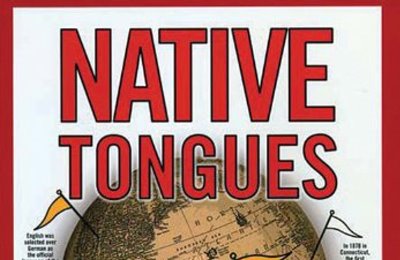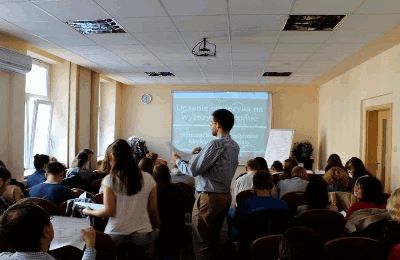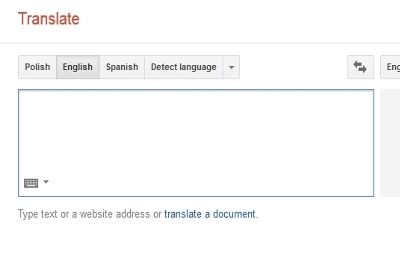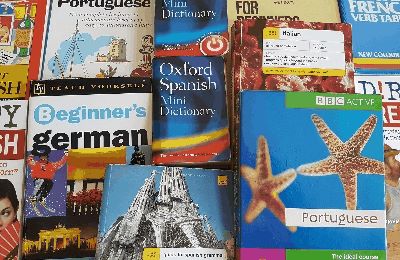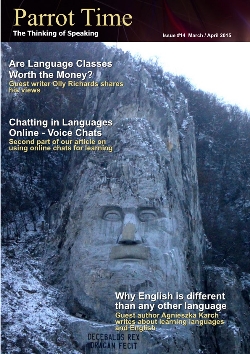Constructed Languages
Making It All Up

|
There are over six thousand natural languages in the world, with only a relatively small number of those being used and learned by the majority of people in the world. The rest are used by smaller groups of people in villages and tribes. Despite this huge number of languages, and in some cases because of it, some people have created their own languages, forming their own syntax, grammar and vocabulary. These are called "constructed languages" or simply "conlangs". These are not to be confused with pidgin languages, which arise when two or more languages collide with each other, causing the people involved to merge them into a new language as a necessity to communication. Nor are these creoles, which are what happens when a pidgin becomes spoken as a primary language instead of a helping or auxiliary one. A conlang is an entirely new entity. It is likely to borrow some aspects of other languages, for the creators will have previous language experience to use. They are developed for a number of different reasons, the first one being, rather ironically, to ease the problem with there being so many languages. History of Auxiliary Languages This particular kind of conlang is known as an international auxiliary language, also referred to as an IAL or auxlang. The most well known is Esperanto. These are created as a means of communication between the people of different countries that share no other common languages. These are not meant to replace the native language, but simply to offer a secondary shared language. You can see how this could be useful when two world leaders meet and want to discuss issues without using an interpreter. If one person speaks German and the other Swahili, an auxiliary language that both know could be used instead. Such IALs could certainly be useful in simplifying the interpretation and translation nightmare that exists in organizations like the United Nations. Of course, it means that everyone needs to know the auxiliary language. So why create another language when there are so many natural ones that could be used instead? Essentially, learning languages is not easy for most people, and while an IAL would still take time and effort to learn, they are designed to be much easier to learn. One of the first IALs was Volapük, created around 1879 by Johann Martin Schleyer. It got a lot of attention and was used in a few conventions, but was eventually abandoned and a newer and easier language was wanted. Interlingua is an IAL based upon Latin, developed in the first half of the 20th century. It is a naturalistic IAL, meaning its basic components (vocabulary, grammar, etc.) are based upon natural languages. The design was to combine the most common elements from a large number of languages to make it easier to learn for everyone. This is different from Volapük which adopted most of its vocabulary from English and most of its grammar from European languages. Esperanto 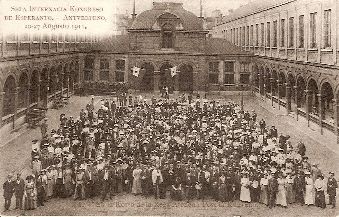 7th Esperanto congress, Antwerp, Belgium, August 1911 Esperanto was created by L. L. Zamenhof in the 1870s and was first published in 1887. It is also a naturalistic IAL, and gained a large following, especially among language learners. A major strength with Esperanto is that while it has a vocabulary that can be at least partially recognized rather easily by speakers of many languages, given that is where the words were derived, the grammar and verb structures are also greatly simplified. There are no irregular verbs in Esperanto, so a learner does not need to memorize all the different exceptions. That alone is often a major obstacle to learning natural languages. But while being learned by hundreds of thousands of people in numerous countries throughout the world, it never really became adopted as an international language, at least it the way it was originally intended. While people use it to communicate, the same as with a natural language, it is not used in the geopolitical arena and no world leaders or major world organizations are using it as their primary means of communications. Many people learn languages as part of understanding another culture or as something to use in their daily lives. To them, a conlang helps them with neither of those things. Why have we never fully adopted an IAL, such as Esperanto or Interlingua? I think the main reason is that the average person is resistant to learning a second language. In some countries, language education is heavily promoted, and in some specific instances, becoming bilingual is quite normal. But when a person learns a language, they do so because it is part of their daily life or has a practical usage. Being taught a language that has no daily practicality seems pointless to most. In order for an IAL to really be useful, everyone would have to learn the same one. Even if that language is easier than most to learn, a person that does not want to learn another language might resent being told they have to, while a person that does learn other languages might resent being told they have to learn that specific one. English and French have become more of the internationally used languages, and they are both natural languages. So why do not people rebel against them (more than they already do, at least)? Perhaps because learning one of those gives the learner access to another culture instantly, while there is no culture based around an IAL (although Esperanto has made great strides in creating its own community and culture). Many language learners have fully adopted Esperanto and love to use it with others. They will extol its numerous virtues and encourage you to learn it, perhaps even more than is done for a natural language. I feel in that capacity, it loses its auxiliary status and becomes a regular conlang. Logical Languages  Page from the Voynich Script, which may contain a constructed language. No one has been able to translate it. A more recent creation is Lojban, created in 1987 by "The Logical Language Group" (LLG). It was based upon Loglan, which was invented by James Cooke Brown in 1955 and developed by The Loglan Institute. Unlike Esperanto and Volapük, Loglan was not solely created as an IAL. Its original purpose was to test the Whorf-Sapir hypothesis of the influence of language on the way a person thinks. That is, they wanted to make a language so unique that it would force people to think in an entirely new way. It was the first "logical language". Compared to the enthusiasm for Esperanto, I have met only a few people that even know or care about Loglan or Lojban. I think they fail to capture the romance of languages the way the IALs do. Potential Conlangs There are a few historical artifacts that have unknown scripts and languages which have not yet been successfully translated. One of these is the Voynich Manuscript, a series of pages with many drawings and diagrams along with a script which seems to have many characteristics of a natural language. Since it unlike any other recognized language, the general consensus is that it is either a complete hoax or a created language. |
|
Why are they made? While auxiliary languages have a specific place in the world, they are basically tied, at least in theory, to geopolitical issues. Constructed languages are generally created for other reasons, however.  Elves from Tolkien's Middle Earth One popular reason for creating a conlang is to enhance a fictional world. Authors have created many artificial tongues to make their characters and stories seem more tangible. J.R.R. Tolkien created some of the most well known in his Middle Earth world used in his books like "The Hobbit" and "The Lord of the Rings". The characters use these languages and in some cases, they even become a part of the plot, where a character's knowledge of another language becomes crucial. Tolkien is often categorized as a linguist due to his prolific contributions to the area of fictional languages. Exactly how many he created is unknown even now, for not all of his linguistic related works have been published. It is estimated, though, that he created over twenty, some of them very complete, some only in a limited capacity, but all with their own unique vocabulary and grammar. His stories contain not only characters using the languages but also poems and songs composed for them. Television and films have also had a number of conlangs created. Besides Esperanto, Klingon, created for the Star Trek universe, is probably the most popular conlang. It is definitely the most famous alien language. Many people not only have learned it but created their own materials like courses and stories for it. There was even a man in the news that was teaching his baby son Klingon, hoping to make it bilingual with it. That kind of fanaticism upset a lot of people, however, and some even dubbed it child abuse. 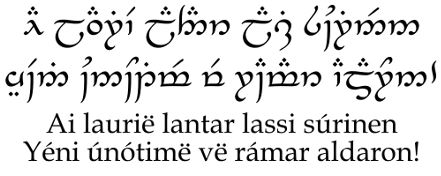 Elven language and script from Tolkien's Middle Earth Klingon presents an interesting counterpoint to that IALs, in that while Esperanto and Interlingua were made specifically to be easy to learn, Klingon was designed specifically to be completely alien, literally. Its main developer, Marc Orkland, refused to even include common elements of other languages, like the sound "ah" or the verb "to be". Not only have numerous books on and in Klingon been published, an actual "Klingon Language Institute" has been established. This organization has had many major works, such as "Hamlet" and books from the Bible, translated into Klingon. While many languages learners like these mainstream creations, the real bulk of artificial language creation comes from the polyglots that want to make their own languages for fun. The temptation to make your own is very strong for some people, partially because it is also a way to develop your own ideas of a culture and world. People have always loved exploring new worlds through books, role-playing games and film, so I think this is an extension of that, giving them a chance to make their own. To me, the conlang community is like a smaller rival tribe of natural language learners. There are many websites, organizations and wikis devoted to their promotion and creation. I have met many people that had were developing their own conlangs and wanted them included alongside natural languages. One project I encountered was even devoted to creating a whole new world comprised of nations with governments and societies based around members conlangs; literally, a conplanet! Getting Serious Here is a major warning to the reader: do not treat the creation of conlangs lightly, for those involved with them take them very seriously. While they are having fun making them, it is not a trivial matter to them. They spend a huge amount of time and effort in forming the syntax, structure and vocabulary. Many create new writing systems as well as related aspects beyond language, like cultural and historical aspects. To them, they are not just playing around with words: they are creating a whole new world. Just as people take pride in their nations and languages, conlangers also have a great deal of pride caught up in their activities, and they will fight just as fiercely, if not more, to promote and defend them. I have seen many discussions turn nasty when the subject of Esperanto is brought up, but the discussion over other conlangs can be even worse. Of course, it is normal to see a few conlangers showing off their babies and taking an interest in others' creations. There are even some conlangs that are collaborations of a few people working together. They vote on grammar and syntax elements, sometimes for fun and sometimes in the creation of a new IAL. It is an entire subculture that you are essentially part of or not. The Cons of Cons 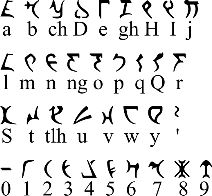 Klingon alphabet for the Klingon race of StarTrek Just like any subculture, there is a good deal of friction between conlangers and natural language learners. While there is nothing that says the two groups can not overlap, like a natural learner might also love conlangs, I have noticed there is often a strong backlash against conlangs. I mentioned earlier how there are several thousand natural living languages. To me and others, this raises the question of why would someone create a new language when there are so many out there that could be learned and, perhaps more importantly, be learned to help preserve them. Indeed, with there being a large number of endangered languages, how can one justify creating a fake one over saving a real one? Of course, logically, there is no real connection. A conlang is not going to be the thing that kills an endangered language; it is other natural languages that have done that. Most conlangers are lucky if they can get even a few people using what they make while "real" languages have clashed over the centuries, driving lesser languages into early and often almost overnight deaths. But logic has nothing to do with passion.  A group of Klingons Another reason for the friction is due to what I said before with the warning. Conlangs can easily be dismissed as something trivial, like a person creating or studying one is not really into languages. Considering the work that goes into developing a conlang, the creators might feel the same about those that do not create their own. After all, they view themselves as so serious that they are building one from scratch! Many people learn languages as part of understanding another culture or as something to use in their daily lives. To them, a conlang helps them with neither of those things. Few conlangs are actively used by anyone except the original speakers and they have no culture attached to them. Others feel that the makers of constructed languages are doing so as a way of establishing a way to mock others. They develop their "secret" language that no one else can understand. Not everyone has a real strong feeling on the issue of artificial languages and for some people, their feeling is based upon how aggressively the other side is. If a conlanger starts trying to push their creation onto others, the natural language learner will push back. This is similar to the way people often view religion: you are welcome to what you do, just do not force it on me. Indeed, that seems to be what really pushes a simple discussion into a heated debate; the attitude by one side that the other is doing something wrong and they should do like they themselves do. This is about as useless as telling someone that you are learning Polish so everyone else should be as well, or declaring that French is terrible and should never be used. Conclusion Whether you like natural languages, constructed languages, or auxillary languages, they all have followers, learners and reasons for existing. They can even help each other; a natural language can provide the inspiration and guidance in creating a constructed one, while a conlang can help give insight into how natural languages work. Rather than arguing over which is right and wrong, we should come to see the benefits of each and embrace them all as cousins in our wonderful language universe! |
| Constructed Languages - Making It All Up | ||||||
| Writer: | Erik Zidowecki | |||||
| Images: | ||||||
| ||||||
| Sources: | ||||||
| ||||||
All images are Copyright - CC BY-SA (Creative Commons Share Alike) by their respective owners, except for Petey, which is Public Domain (PD) or unless otherwise noted.
|
Looking for learning materials? Scriveremo Publishing, has lots of fun books and resource to help you learn a language. Click the link below to see our selection of books, availlable for over 30 langauges!
| |
comments powered by Disqus







